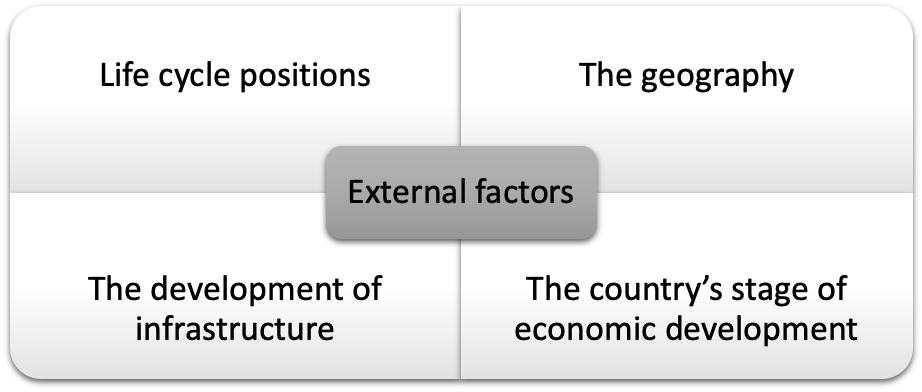Marketing Mix: the Standardization vs Adaptation Dilemma
What does it mean to standardize or adapt the Marketing Mix to a new market? An analysis of risks and opportunities
Published by Lukasz Sramkowski. .
Planning SME Bestpractice International marketing International marketing
When entering a new market, one of the most important factors to consider is the so-called dilemma between standardization or adaptation.
What does it mean to standardize or adapt marketing mix to a new market?
Standardization means an undifferentiated use of the same Marketing Mix (4-7Ps) in all countries. In this case, the firm simply replicates, without any changes, the same strategy in the different markets in which it operates. In general, firms that adopt the standardization strategy are those that are exporting for the first time, or those that focus on cost savings through economies of scale and for whom an adaptation process could result very costly. You can find below some factors that favor standardization :
- Globalization of the market (consumers/customers): companies that offer a product whose market is "global" can offer the same product in multiple countries, catering to a wide range of consumers.
- Economies of scale: mass production allows the firm to lower unit production costs by increasing volumes through economies of scale.
- Transferable competitive advantages: offering a standard product can provide several competitive advantages. The cost reduction provided by economies of scale allows the firm to introduce competitive pricing. In addition, a standard product ensures quick response times to the market, provides a global standardized image and better control over marketing strategies.
Adaptation means that each country/market has its Marketing Mix. The adaptation strategy is geared towards meeting the needs of the market, planning all business activities with the aim of efficiently meeting the specific needs and respecting the values of local consumers. We can take as an example beer companies. When entering a new market we can see that one country can prefer non-alcoholic beer. The company then has to adapt to the situation and, for instance, decide to produce more beer which results preferable for the chosen country/market. As in the case of the standardization, the adaptation strategy is better suited in the presence of the following factors:
- Differences between customers/consumers
- Differences in local competitive conditions
- Differences in local legal conditions
- High degree of service in the company’s offering
Differences between Standardization and Adaptation in Marketing Mix (4Ps)
There is no right or wrong decision. However, one of the most important elements to emphasize is that the decision to standardize or not is really about all the levers of the Marketing Mix (Product, Price, Place and Promotion), and not only about the Product.
Product
When deciding which strategy to go for, there are a few elements to consider - firstly whether company provides a good or a service. In the case of a good, it is possible to think of products for specific target markets; in the case of services, the factors in the image below should be considered.

People Processing: for this kind of services, customers are “part of the production”. In this context, a physical local presence is needed. We can see this type of service in hospitals, restaurants or hotels. It is therefore very difficult to standardize, due to the involvement of customers in the production of the service.
Possession processing: customers in this type are not taking part in the “production”, but their goods are. We take this type of service in the fields of car repairs, transport of goods or when we hire an electrician. In this type of service, a lower degree of customer contact needed, compared to the previous case.
Information-based services: this kind of service collects and handles data to create value. Customers are taking minimal involvement in the “production” process. Telephone companies, database providers, news and similar are using this type of service to create value. Standardization suitability in this type of service is effective, due to the virtual nature of these services.
Price
When considering changes and adaptations in the price, some factors which can influence the decisions.
First of all, we should look at what internal factors can impact the decision. Production location can influence due to the possibility of additional costs. Market entry modes are also responsible for price changes, when we use for example exporting or licensing and franchising.
Among external factors, local government influence and constraints should be taken into account, in the forms of taxes, import controls or tariffs. It is also important to analyze the macroeconomic situation of the target market, in relation to e.g. inflation and exchange rate fluctuation.
Place

Above we can see some external factors influencing the choice in terms of distribution (place).
It is extremely important for the company to conduct market research about the specific geographic characteristic of the country before launching a new product: the development of infrastructure in the country, for example, ensures the mobility of labor and capital within/from the economy. Another external element to take into accounto is the country's economic development stage, which provides information about the profitability in the long run: it helps decide whether to enter the market immediately, or to wait a little longer.
Promotion
In advertising a product or service, a couple of difficulties could be met, when entering a new market. It is always appropriate to consider the differences that arise between domestic and target markets: first and foremost, differences in terms of culture, value patterns and language. Given the current historical phase, it is also important to analyze the differences in the main digital channels and users of the different types of media. Typically, when it comes to promotion, there are so many differences between the domestic and foreign markets that it sometimes becomes essential to profit of the expertise of a local company.
Conclusions
In conclusion, whether your approach towards exporting leans towards standardization or adaptation, it is important to carefully consider at all the factors listed above, as it can help you analyze the risk and accurately plan your strategy for a successful expansion in a new market.
Do you want to know more about Marketing Mix? Explore the International Marketing section of our Magazine!


